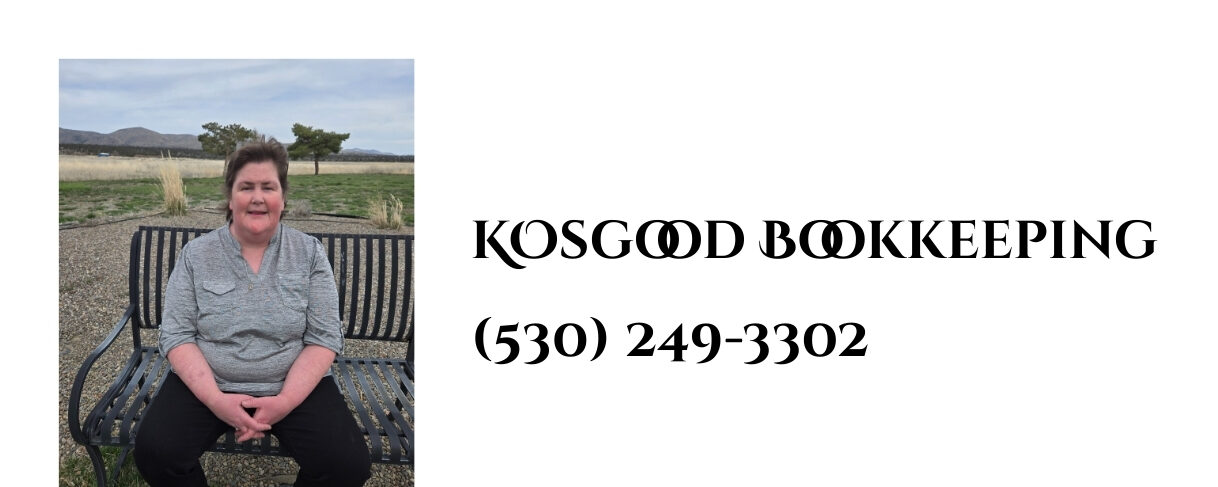
Keeping your books organized every month helps you avoid mistakes, stay on top of your finances, and be ready when tax time rolls around.
Whether you’re just getting started with bookkeeping or looking to tighten up your current process, this checklist gives you the key tasks to cover each month to keep your business on track.
1. Record All Income and Expenses
What this means:
Log every dollar that comes in and goes out of your business.
Why it’s important:
Helps you track where your money is going and ensures your records are accurate.
How to do it:
- Use software like QuickBooks, Wave, or a spreadsheet.
- Match your entries with receipts or invoices.
New to this? Start with one account (like your main checking account) and get used to entering info weekly.
2. Reconcile Bank and Credit Card Accounts
What this means:
Ensure that your records align with what your bank or credit card company reports.
Why it’s important:
Catches errors, fraud, or forgotten transactions.
How to do it:
- Obtain your monthly bank or credit card statements.
- Compare it line by line with your bookkeeping records.
- Fix any differences.
Tip: Most bookkeeping software can connect to your bank and help you reconcile faster.
3. Categorize Transactions
What this means:
Assign each transaction to a category like “office supplies,” “client income,” or “software.”
Why it’s important:
Makes your reports meaningful and helps at tax time.
How to do it:
- Use your software’s chart of accounts.
- Be consistent. Avoid switching categories from month to month for the same type of expense.
Tip: Start small—focus on income and your top 5 expenses.
4. Review Unpaid Invoices
What this means:
Check if any customers owe you money.
Why it’s important:
Unpaid invoices = lost revenue. Following up helps you get paid.
How to do it:
- Pull a report of “Accounts Receivable” (A/R).
- Email or call clients with overdue invoices.
- Record payments once they’re received.
5. Review and Pay Your Bills
What this means:
Ensure you are paying your vendors, suppliers, and service providers on time.
Why it’s important:
Keeps your business running and helps you avoid late fees.
How to do it:
- Review outstanding bills (Accounts Payable).
- Schedule or make payments.
- Mark bills as paid in your records.
6. Review Your Cash Flow
What this means:
Compare the money coming in with the money going out.
Why it’s important:
Helps you know if you can cover expenses and plan ahead.
How to do it:
- Use a cash flow report in your software or a spreadsheet.
- Compare to last month.
- Look for warning signs, such as more money going out than coming in.
7. Handle Payroll and Contractors
What this means:
If you pay employees or contractors, ensure that payments are accurate and made on time.
Why it’s important:
Keeps you compliant with tax laws and helps you avoid penalties.
How to do it:
- Run payroll and save pay stubs.
- Pay payroll taxes if required.
- Send 1099s to contractors at year-end (if they earned $ 600 or more).
8. Organize Your Receipts and Documents
What this means:
Keep copies of receipts, invoices, and bank statements.
Why it’s important:
Supports your records in the event of an audit.
How to do it:
- Scan or take photos of receipts.
- Use a tool like Google Drive or Dext.
- Save files by month and type (ex: “2025 March – Receipts”).
9. Review Key Reports
What this means:
Look at a few basic financial reports.
Why it’s important:
These indicate whether your business is generating a profit, incurring a loss, or operating at a break-even point.
Key reports to check:
- Profit and Loss (P&L) – Are you making a profit?
- Balance Sheet – What does your business own and owe?
- Cash Flow Statement – How’s your actual cash movement?
10. Prepare for Estimated Taxes
What this means:
Set money aside for taxes if you’re self-employed or own your business.
Why it’s important:
Avoids big tax bills and penalties.
How to do it:
- Review net income.
- Use the IRS Form 1040-ES worksheet or consult with a tax professional.
- Set aside money each month.
Monthly bookkeeping doesn’t have to be complicated. Following this checklist each month will help you stay organized, make better decisions, and feel more confident about your finances.
